Charger Yi Fang EIZFAN WF4
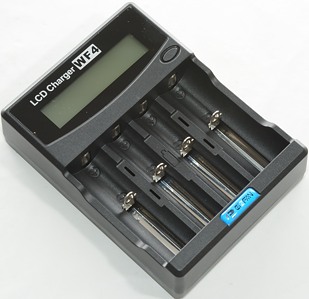
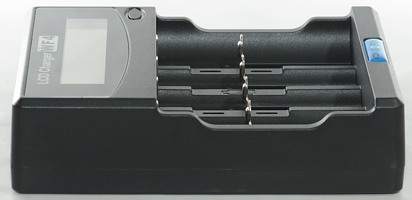
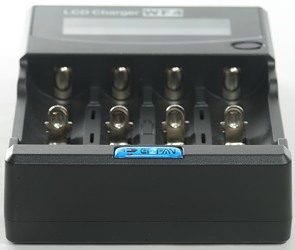
Yi Fang Technology is a company selling chargers and batteries branded EFAN and EIZFAN.
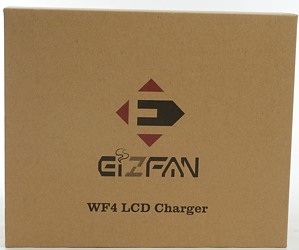
The charger arrived in a cardboard box with the model number on it and not any other information.
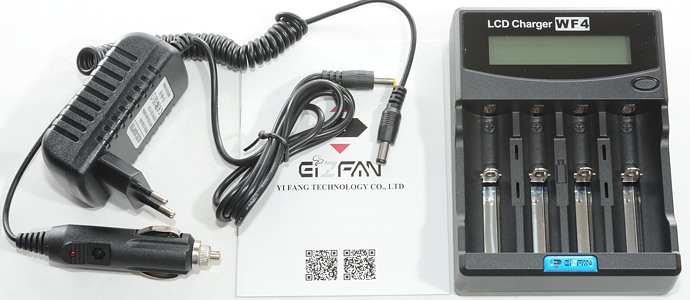
The box contained the charger, a power supply, a car adapter and a instruction manual in English and probably Chinese.

The charger has a single 12V input for use with the power supply and car adapter.
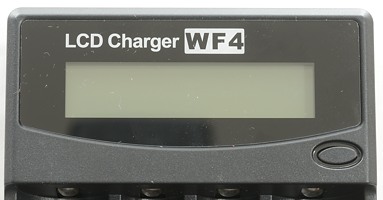
The user interface is a small display and a single button to select current.

The display shows voltage with two decimal places and animated battery symbols when charging.
Like many other chargers it is missing a dedicated battery full indicator, you have to look at the animation. It will stop with all blocks in the battery shown, when the battery is full.
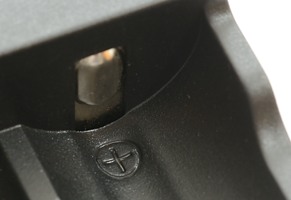
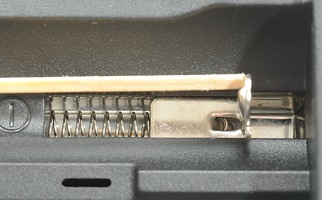
The slots uses the typical design with a slider. They are with metal rails, but the slider is locking up when pressed at an angle, like when putting batteries in.
The slots can accept batteries from 30.5 to 71.2 mm.



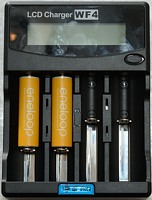
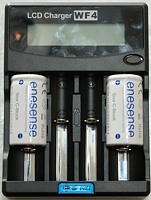
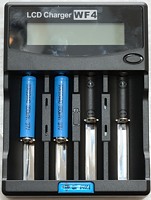
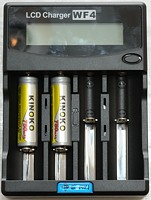
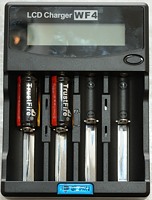

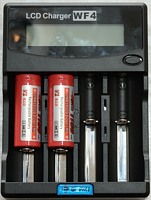
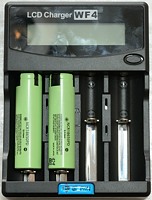
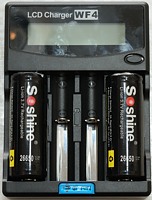
The charger can easily handle 70 mm long batteries including flat top cells.
Measurements
- When not connected to power it will drain about 0.2mA from batteries.
- Voltmeter is within 0.03V.
- The voltmeter can show voltage below 0.3 volt, but will not be started before the voltage has been above 0.5 volt.
- The voltmeter will show up to 4.23 volt and will be turned off if voltage is above about 4.3 volt.
- The charger will charge with 0.8mA from 0 volt and not report any battery.
- At 0.5 volt regular charge current will be applied and show the charge animation.
- Above 2 volt the charger assumes LiIon.
- Charger always starts with the 0.25A setting.
- When charge is finished the charger will charge with 0.1mA.
- Charger will restart if voltage drops to 3.9 volt
- Charger will restart charging after power loss, or battery insertion.
- The charger has a buzzer with low volume that will sound when charging is done.
- Specifications on charger says 4.2V +/-0.02V (Usual it is +/-0.05V).
Charging LiIon
%20%231.png)
At 0.25A the charger does a nice CC/CV charging with about 50mA termination current.
%20%231.png)
At 0.5A the charger has the same nice CC/CV curve and the same 50mA termination.
%20%231.png)
And also at 1A.
%20%232.png)
%20%233.png)
%20%234.png)
The 3 other channel is charging fine.
%20%231.png)
%20%231.png)
No problem with 18650 batteries with other capacity.
%20%231.png)
The charger handles this old cell nicely, even at 1A.
%20%231.png)
A more realistic charge current for this old cell.
%20%231.png)
%20%231.png)
Two more normal small cells are charged fine.
.png)
Using all channels is no problem, there is full current for all cells.
.png)
The charger uses nearly 2A at 12 volt.
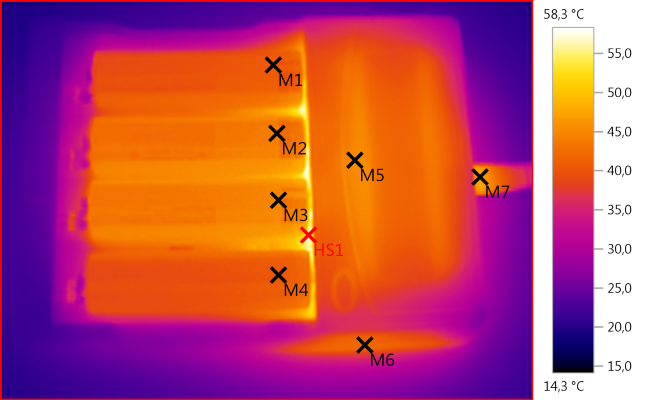
M1: 40,9°C, M2: 44,3°C, M3: 45,0°C, M4: 40,5°C, M5: 45,3°C, M6: 42,1°C, M7: 47,8°C, HS1: 58,3°C
As usual there is som hot parts inside the charger, the two center batteries do get fairly warm (To avoid this use 0.5A charge current).
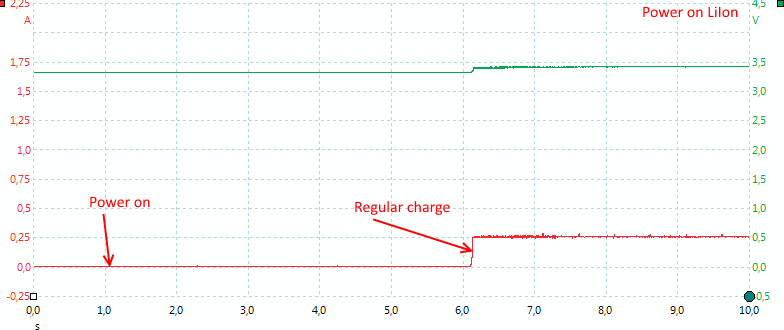
The charger needs 5 seconds to initialize.
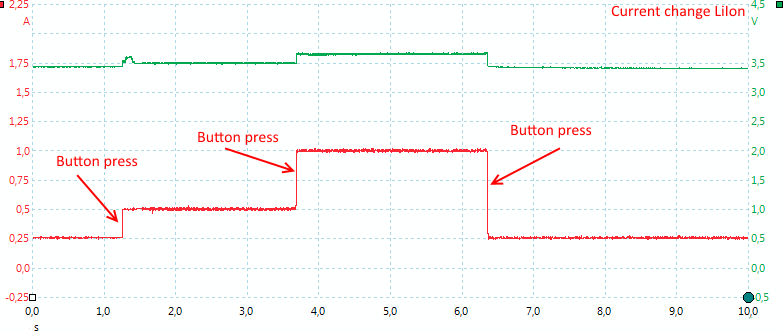
Current can be changed at any time during charge.
Charging NiMH
%20%231.png)
With 0.25A current the cell is charged fine and it terminates, there is no trickle charge.
%20%231.png)
With 0.5A current the termination looks like maximum voltage termination.
%20%231.png)
At 1A it is also a maximum voltage termination. I do miss a small temperature raise, showing that the cell is filled completely, i.e. it stops before the cell is full.
%20%232.png)
%20%233.png)
%20%234.png)
All channels look similar.
%20%231.png)
With the XX cell the temperature raise is present, i.e. the cell is filled.
%20%231.png)
Same with the Powerex and here it looks like a -dv/dt termination.
%20%231.png)
The AAA is terminated a bit early.
%20%231.png)
The charger is fairly fast at detecting a full cell.
.png)
Four eneloops is no problem, here the termination is on voltage.
.png)
With an external power supply I can see the charger uses about 1A at 12V when charging.
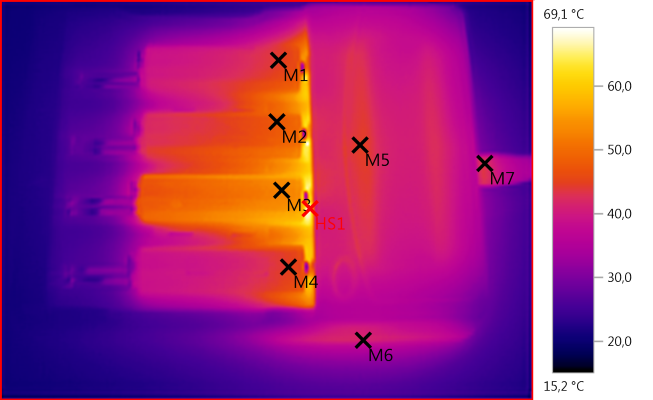
M1: 44,4°C, M2: 47,8°C, M3: 52,8°C, M4: 44,6°C, M5: 44,5°C, M6: 41,4°C, M7: 42,9°C, HS1: 69,1°C
NiMH do get rather warm, especially the two in the middle. It can be avoided by using 0.5A charge current.
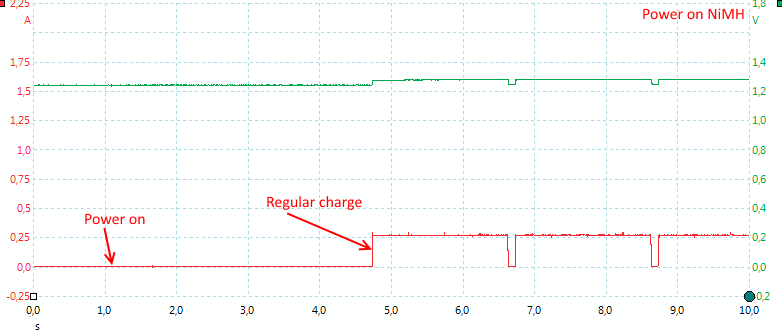
The charger only need 3.5 seconds to start a NiMH charger.
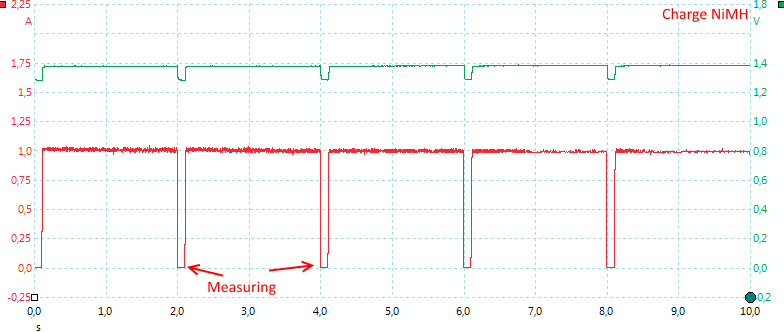
The charger stops charging to measure NiMH voltage during charge. These pulses are also the reason for the pulsing input current.
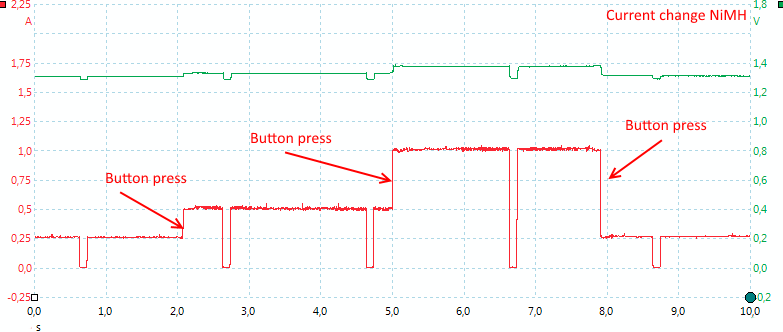
Again the current change button can be used at any time.
LiIon & NiMH mixed charge
There is no problem charging one LiIon and one NiMH battery at the same time.
.png)
.png)
Testing the supplied power supply with 2500 volt and 5000 volt between mains and low volt side, did not show any safety problems.
Conclusion
The charger has a good CC/CV charge curve for LiIon. With NiMH it uses a combination of voltage and -dv/dt, in my opinion the voltage termination is slightly to low and it would have been nice with a top-off charge after a voltage termination (This behaviour is very common for NiMH chargers).
The only real minus I have about the charger is the slider, everything else works fine.
Notes
The charger was supplied by Yi Fang for review.
Here is an explanation on how I did the above charge curves: How do I test a charger
Read more about how I test USB power supplies and chargers






















%20%231.png)
%20%231.png)
%20%231.png)
%20%232.png)
%20%233.png)
%20%234.png)
%20%231.png)
%20%231.png)
%20%231.png)
%20%231.png)
%20%231.png)
%20%231.png)
.png)
.png)



%20%231.png)
%20%231.png)
%20%231.png)
%20%232.png)
%20%233.png)
%20%234.png)
%20%231.png)
%20%231.png)
%20%231.png)
%20%231.png)
.png)
.png)




.png)
.png)